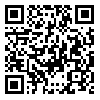Volume 14, Issue 5 (September & October 2023)
BCN 2023, 14(5): 675-686 |
Back to browse issues page
Download citation:
BibTeX | RIS | EndNote | Medlars | ProCite | Reference Manager | RefWorks
Send citation to:



BibTeX | RIS | EndNote | Medlars | ProCite | Reference Manager | RefWorks
Send citation to:
Fatehi F, Khaghani P, Okhovat A A, Moradi K, Teimouri F, Mortaja M, et al . Investigating the Association Between Muscular Ultrasonographic Alterations and Clinical Symptoms in Patients With Inflammatory Myopathy. BCN 2023; 14 (5) :675-686
URL: http://bcn.iums.ac.ir/article-1-2229-en.html
URL: http://bcn.iums.ac.ir/article-1-2229-en.html
Farzad Fatehi *1 

 , Parisa Khaghani1
, Parisa Khaghani1 

 , Ali Asghar Okhovat1
, Ali Asghar Okhovat1 

 , Kamyar Moradi1
, Kamyar Moradi1 

 , Farzad Teimouri1
, Farzad Teimouri1 

 , Mahsa Mortaja1
, Mahsa Mortaja1 

 , Mahsa Layegh1
, Mahsa Layegh1 

 , Akram Panahi1
, Akram Panahi1 

 , Shahriar Nafissi1
, Shahriar Nafissi1 




 , Parisa Khaghani1
, Parisa Khaghani1 

 , Ali Asghar Okhovat1
, Ali Asghar Okhovat1 

 , Kamyar Moradi1
, Kamyar Moradi1 

 , Farzad Teimouri1
, Farzad Teimouri1 

 , Mahsa Mortaja1
, Mahsa Mortaja1 

 , Mahsa Layegh1
, Mahsa Layegh1 

 , Akram Panahi1
, Akram Panahi1 

 , Shahriar Nafissi1
, Shahriar Nafissi1 


1- Neuromuscular Research Center, Shariati Hospital, Tehran University of Medical Sciences, Tehran, Iran.
Abstract:
Introduction: Muscle biopsy is commonly used to diagnose inflammatory myopathies. We evaluated the ability of muscle ultrasound, a non-invasive and simple tool, to distinguish between healthy subjects and patients with inflammatory myopathy.
Methods: This study was conducted on 17 patients recently diagnosed with biopsy inflammatory myopathies (12 dermatomyositis, 5 polymyositis) compared with 17 age- and gender-matched healthy control adults. All patients underwent clinical assessments, including manual muscle testing, hand-held dynamometry, and muscle ultrasound evaluations, including thickness and echo intensity in predefined muscle groups.
Results: The disease duration was seven months (interquartile range: 3 to 11 months). Except for the biceps and gastrocnemius, patients’ muscles had significantly higher echo intensity and lower thickness than the control group. The echo intensity sum-score manifested the highest area under the curve compared to the sum-scores of other variables (echo intensity vs manual muscle testing: Area under curves-difference=0.18, P<0.01; echo intensity vs dynamometry: Area under curves-difference=0.14, P=0.02; echo intensity vs thickness: Area under curves-differences-difference=0.25, P<0.01).
Conclusion: The echo intensity of muscles differed significantly between healthy individuals and patients with inflammatory myopathies and may serve as a useful diagnostic biomarker.
Methods: This study was conducted on 17 patients recently diagnosed with biopsy inflammatory myopathies (12 dermatomyositis, 5 polymyositis) compared with 17 age- and gender-matched healthy control adults. All patients underwent clinical assessments, including manual muscle testing, hand-held dynamometry, and muscle ultrasound evaluations, including thickness and echo intensity in predefined muscle groups.
Results: The disease duration was seven months (interquartile range: 3 to 11 months). Except for the biceps and gastrocnemius, patients’ muscles had significantly higher echo intensity and lower thickness than the control group. The echo intensity sum-score manifested the highest area under the curve compared to the sum-scores of other variables (echo intensity vs manual muscle testing: Area under curves-difference=0.18, P<0.01; echo intensity vs dynamometry: Area under curves-difference=0.14, P=0.02; echo intensity vs thickness: Area under curves-differences-difference=0.25, P<0.01).
Conclusion: The echo intensity of muscles differed significantly between healthy individuals and patients with inflammatory myopathies and may serve as a useful diagnostic biomarker.
Type of Study: Original |
Subject:
Clinical Neuroscience
Received: 2021/07/14 | Accepted: 2023/06/20 | Published: 2023/09/1
Received: 2021/07/14 | Accepted: 2023/06/20 | Published: 2023/09/1
Send email to the article author
| Rights and permissions | |
 |
This work is licensed under a Creative Commons Attribution-NonCommercial 4.0 International License. |





